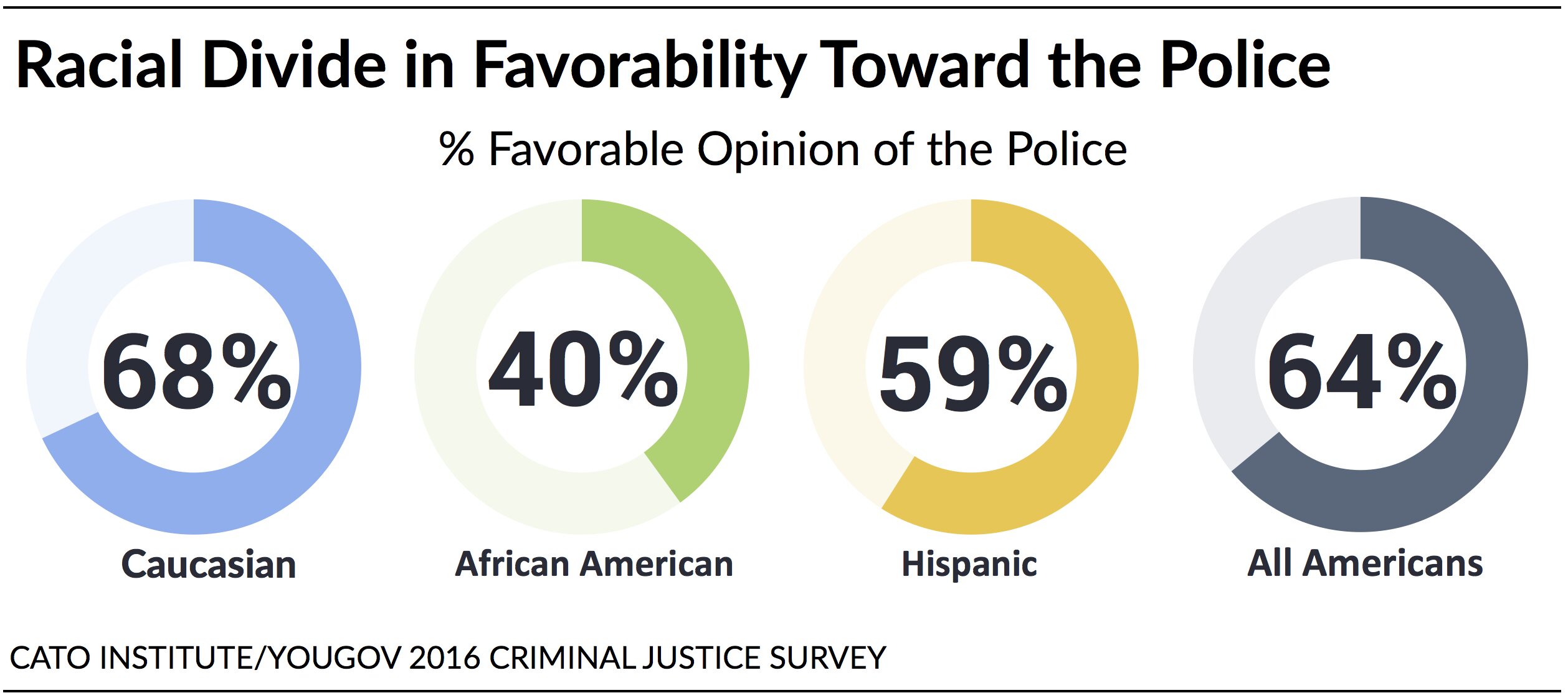At first glance Americans seem generally satisfied with their local law enforcement. Nearly two-thirds (64%) of Americans have a favorable view of the police in their communities, including 33% who have a "very favorable" and 31% who have a "somewhat favorable" view. Only 14% say they have an unfavorable view of their local police, and another 22% say they have neither positive nor negative feelings. (See Appendix B for citizen evaluations of police.)
These topline numbers, however, conceal stark differences in attitudes toward the police across race/ethnicity, age, education, income, and ideology. While some groups have firmly positive views of the police, others believe policing suffers from systematic problems.
Although 64% of Americans overall have a favorable opinion of their local police, only 40% of black Americans and 59% of Hispanic Americans agree. In contrast, white Americans have a much more favorable (68%) perception of the police in their communities. This striking divide across racial and ethnic groups' attitudes toward the police particularly merits additional investigation.
Millennials (Americans under 35) (53%), lower income households (<$30,000), and high school graduates (59%) are also about 20 points less favorable toward the police than Americans over 65 (82%), middle and higher income households ($50,000+) (76%), and high school graduates (73%).11 Suburban residents are only slightly more favorable toward the police (69%) than urban residents (60%). Notably, men and women have similar views of the police. (See Appendix C for breakdown of attitudes by demographics.)
Partisanship significantly correlates with attitudes toward the police. Republicans are more than 20 points more favorable toward the police (81%) than Democrats (59%) and independents (59%). Similarly, ideological Conservatives stand out as the group most favorable (80%) toward the police. Libertarians' views (64%) are more similar to Communitarians' (58%) and Liberals' (54%). (See Appendix A for definitions of ideological clusters.)
Notes:
11 Millennials in this report are defined as Americans under the age of 35.


